
Cirkit Designer
Your all-in-one circuit design IDE
Home /
Component Documentation
How to Use Buzzer: Examples, Pinouts, and Specs
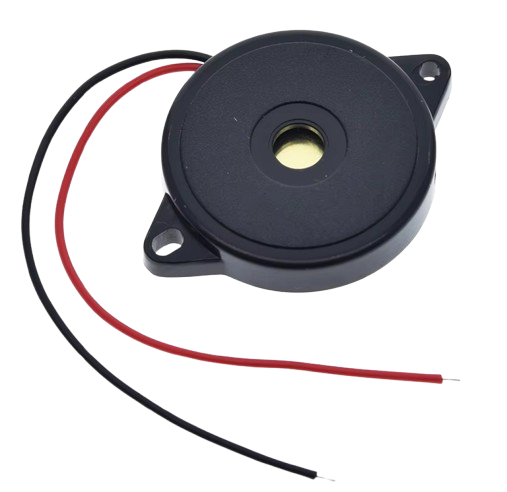
 Design with Buzzer in Cirkit Designer
Design with Buzzer in Cirkit DesignerIntroduction
A buzzer is an audio signaling device, which may be mechanical, electromechanical, or piezoelectric. It is used to produce sound as an alert or notification in various electronic circuits. Buzzers are commonly found in alarm devices, timers, and confirmation of user inputs such as a mouse click or keystroke.
Explore Projects Built with Buzzer
Arduino UNO Controlled School Bell System with DS3231 RTC and Relay Module
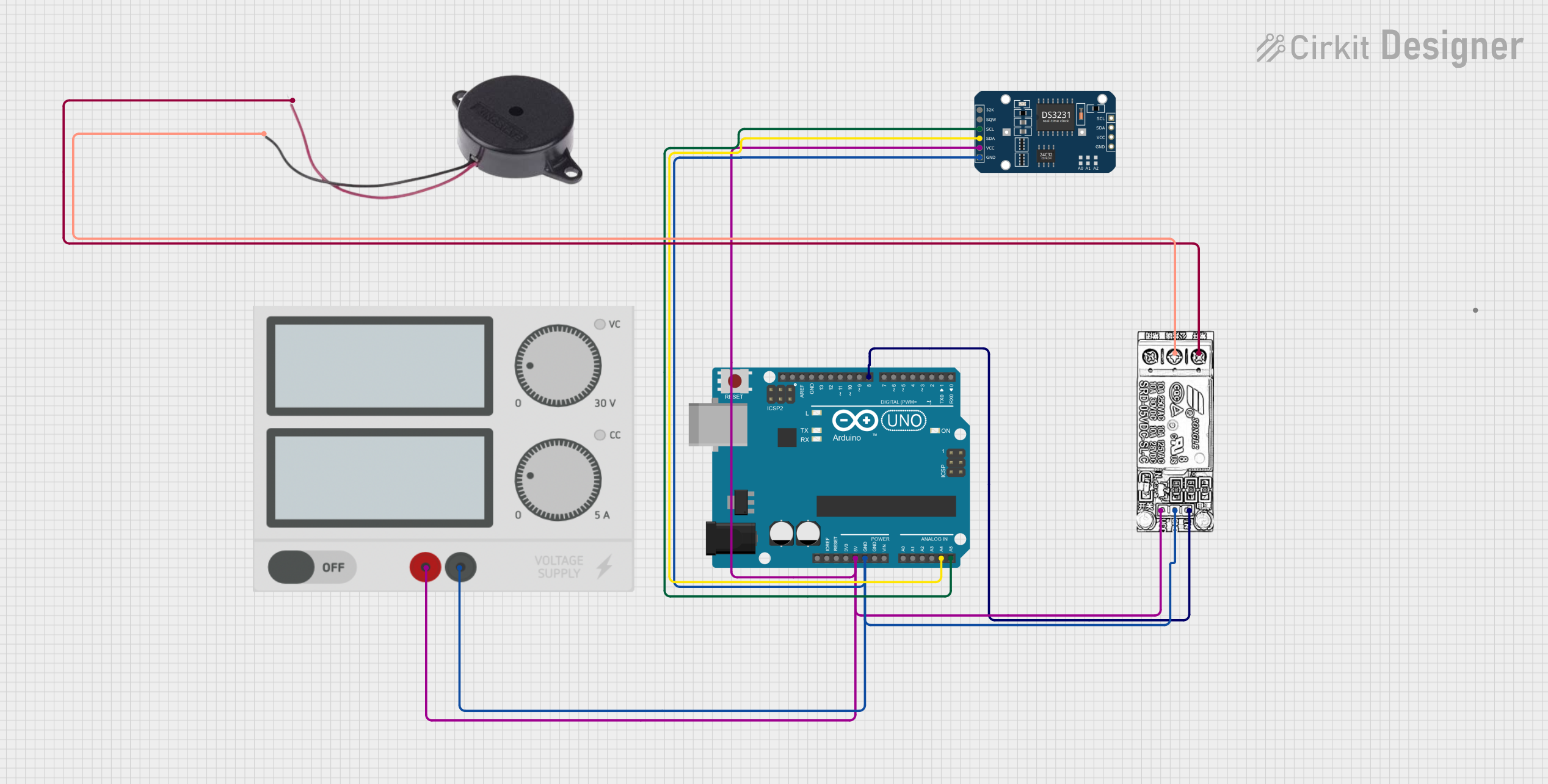
This circuit is designed as an automatic school bell system controlled by an Arduino UNO microcontroller. The Arduino is programmed to ring a buzzer at the start of each school period, with a total of 6 periods defined in the code. The DS3231 Real-Time Clock (RTC) module is used for accurate timekeeping, and a relay module interfaces the Arduino with the buzzer to handle the higher current required to drive the buzzer.
 Open Project in Cirkit Designer
Open Project in Cirkit DesignerBattery-Powered IR Sensor and Buzzer Alarm System
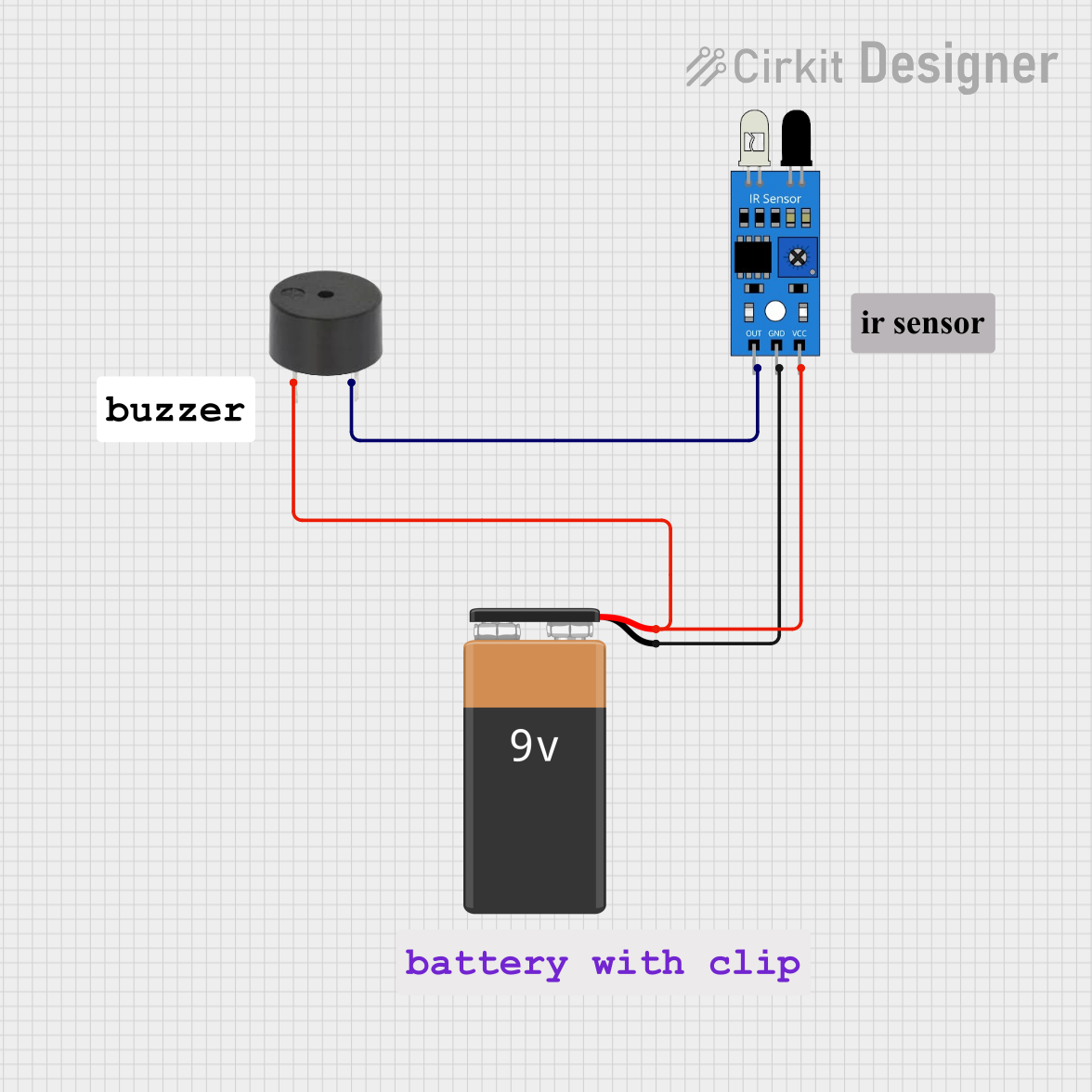
This circuit consists of an IR sensor and a buzzer powered by a 9V battery. The IR sensor detects an object and triggers the buzzer to sound an alarm when an object is detected.
 Open Project in Cirkit Designer
Open Project in Cirkit DesignerBattery-Powered Buzzer Circuit
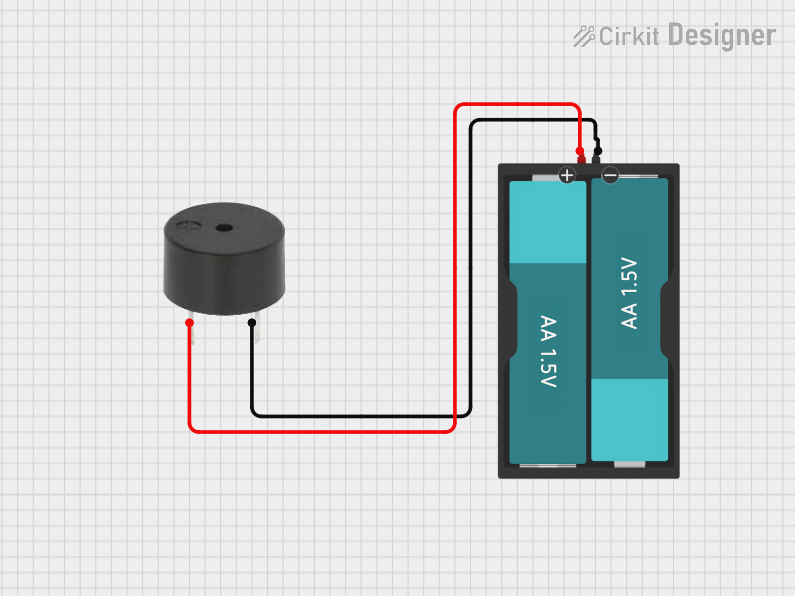
This circuit consists of a simple buzzer connected to a 3V battery source. The positive terminal of the battery is connected to the buzzer's power input, and the negative terminal is connected to the buzzer's ground. The circuit is designed to power the buzzer continuously, producing a constant sound or tone as long as the battery provides sufficient voltage.
 Open Project in Cirkit Designer
Open Project in Cirkit DesignerVoice-Controlled Buzzer System with VC-02 Module
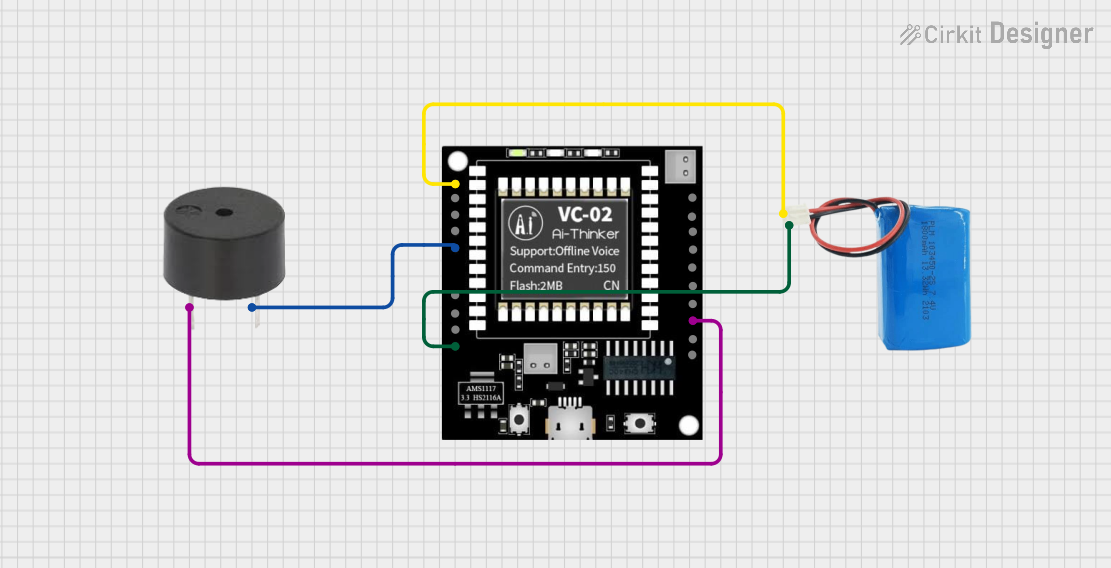
This circuit features a VC-02 voice recognition module connected to a buzzer and powered by a 5V battery. The VC-02 module is programmed to listen for specific voice commands and, upon recognizing the command 'can you make a sound', it activates the buzzer for one second. The circuit is designed for voice-activated sound generation, with the VC-02 module handling voice recognition and serial communication, and the buzzer providing audible feedback.
 Open Project in Cirkit Designer
Open Project in Cirkit DesignerExplore Projects Built with Buzzer

Arduino UNO Controlled School Bell System with DS3231 RTC and Relay Module
This circuit is designed as an automatic school bell system controlled by an Arduino UNO microcontroller. The Arduino is programmed to ring a buzzer at the start of each school period, with a total of 6 periods defined in the code. The DS3231 Real-Time Clock (RTC) module is used for accurate timekeeping, and a relay module interfaces the Arduino with the buzzer to handle the higher current required to drive the buzzer.
 Open Project in Cirkit Designer
Open Project in Cirkit Designer
Battery-Powered IR Sensor and Buzzer Alarm System
This circuit consists of an IR sensor and a buzzer powered by a 9V battery. The IR sensor detects an object and triggers the buzzer to sound an alarm when an object is detected.
 Open Project in Cirkit Designer
Open Project in Cirkit Designer
Battery-Powered Buzzer Circuit
This circuit consists of a simple buzzer connected to a 3V battery source. The positive terminal of the battery is connected to the buzzer's power input, and the negative terminal is connected to the buzzer's ground. The circuit is designed to power the buzzer continuously, producing a constant sound or tone as long as the battery provides sufficient voltage.
 Open Project in Cirkit Designer
Open Project in Cirkit Designer
Voice-Controlled Buzzer System with VC-02 Module
This circuit features a VC-02 voice recognition module connected to a buzzer and powered by a 5V battery. The VC-02 module is programmed to listen for specific voice commands and, upon recognizing the command 'can you make a sound', it activates the buzzer for one second. The circuit is designed for voice-activated sound generation, with the VC-02 module handling voice recognition and serial communication, and the buzzer providing audible feedback.
 Open Project in Cirkit Designer
Open Project in Cirkit DesignerCommon Applications and Use Cases
- Alarm Systems: Used in security systems to alert users of intrusions.
- Timers: Employed in kitchen timers, microwave ovens, and other timing devices.
- User Feedback: Provides audible feedback in devices like computers, printers, and other consumer electronics.
- Toys: Used in electronic toys to produce sound effects.
Technical Specifications
Key Technical Details
| Parameter | Value |
|---|---|
| Operating Voltage | 3V to 12V |
| Current Consumption | 10mA to 30mA |
| Sound Output | 85dB at 10cm |
| Frequency | 2kHz to 4kHz |
| Operating Temperature | -20°C to +60°C |
| Dimensions | Varies (commonly 12mm diameter) |
Pin Configuration and Descriptions
| Pin Number | Pin Name | Description |
|---|---|---|
| 1 | VCC | Positive voltage supply (3V to 12V) |
| 2 | GND | Ground (0V) |
Usage Instructions
How to Use the Buzzer in a Circuit
- Connect the VCC Pin: Connect the VCC pin of the buzzer to the positive voltage supply of your circuit (3V to 12V).
- Connect the GND Pin: Connect the GND pin of the buzzer to the ground of your circuit.
- Control the Buzzer: Use a microcontroller (e.g., Arduino) or a simple switch to control the buzzer. When the circuit is completed, the buzzer will produce sound.
Important Considerations and Best Practices
- Voltage Rating: Ensure that the voltage supplied to the buzzer is within the specified range (3V to 12V) to avoid damage.
- Current Limiting: Use a current-limiting resistor if necessary to prevent excessive current draw.
- Mounting: Secure the buzzer properly in your project to avoid mechanical vibrations that could affect performance.
- Environmental Conditions: Operate the buzzer within the specified temperature range (-20°C to +60°C) for optimal performance.
Example Circuit with Arduino UNO
/*
* Example code to control a buzzer with Arduino UNO.
* The buzzer will beep on and off every second.
*/
const int buzzerPin = 9; // Pin connected to the buzzer
void setup() {
pinMode(buzzerPin, OUTPUT); // Set the buzzer pin as an output
}
void loop() {
digitalWrite(buzzerPin, HIGH); // Turn the buzzer on
delay(1000); // Wait for 1 second
digitalWrite(buzzerPin, LOW); // Turn the buzzer off
delay(1000); // Wait for 1 second
}
Troubleshooting and FAQs
Common Issues Users Might Face
- No Sound from Buzzer:
- Solution: Check the connections to ensure the VCC and GND pins are correctly connected. Verify that the voltage supply is within the specified range.
- Buzzer Produces Weak Sound:
- Solution: Ensure that the voltage supply is adequate. Check for any loose connections or poor solder joints.
- Buzzer is Always On:
- Solution: Verify the control logic in your circuit or microcontroller code. Ensure that the control pin is correctly toggling the buzzer.
FAQs
- Q: Can I use the buzzer with a 5V power supply?
- A: Yes, the buzzer can operate within a voltage range of 3V to 12V, so a 5V power supply is suitable.
- Q: How can I change the sound frequency of the buzzer?
- A: The sound frequency of a piezoelectric buzzer is typically fixed. However, you can use a PWM signal from a microcontroller to modulate the sound.
- Q: Is it necessary to use a current-limiting resistor with the buzzer?
- A: It depends on your circuit design. If the current draw exceeds the microcontroller's pin current rating, a current-limiting resistor may be necessary.
This documentation provides a comprehensive guide to understanding, using, and troubleshooting a buzzer in various electronic applications. Whether you are a beginner or an experienced user, this guide aims to help you effectively integrate a buzzer into your projects.